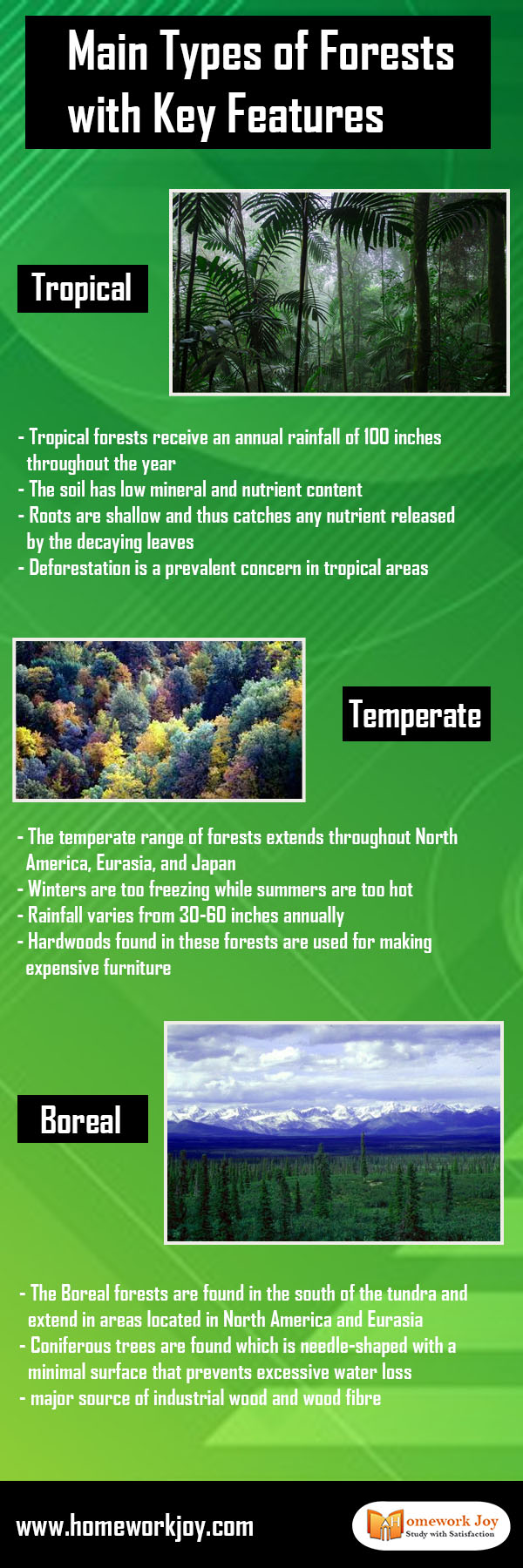The forests cover more than ⅓ portion of the Earth’s surface. It has around 3 trillion trees. Forest can survive in dry, wet, cold, and hot climates. Thus different types of forests have different characteristics that help them to survive in different environments. Three main types of forests are separated according to their distance from the equator.
Let us discuss these types of forests one by one.
Tropical
- Tropical forests receive a lot of the rain, annual rainfall of 100 inches throughout the year
- The forest grew around the equator in South Africa, Africa, and Southeast Asia.
- They have the highest diversity per area in the world, with millions of species.
- Though the forest covers only a small part of the Earth, they still have millions of species of flora and fauna.
- The soil has low mineral and nutrient content. It is several meters deep and supports so much life.
- The temperature here remains stable around 27-degree Celcius.
- Roots are shallow and thus catch any nutrient released by the decaying leaves.
- Deforestation is a prevalent concern in tropical areas.
- It generally has a dry and rainy season.
- Nearly 0.6 miles contains various species with around 100 tress.
Temperate
- The temperate range of forests extends throughout North America, Eurasia, and Japan.
- The forest receives well defined four seasons in this zone, including winter.
- The temperature varies from -30 to 30 degrees Celcius.
- Winters are too freezing while summers are too hot
- Rainfall varies from 30-60 inches annually.
- Pines and fir trees are common types of trees found in these forests.
- The decaying leaves and moderate temperatures combine to create fertile soil.
- On average, there are three to four species per square kilometers.
- Hardwoods found in these forests are used for making expensive furniture.
- Common tree species are oak, beech, willow, hickory, and so on.
- Common animal species found here are rabbits, beak, deer, wolves, and so on.
Boreal
- The Boreal forests are found in the south of the tundra and extend in areas located in North America and Eurasia.
- Coniferous trees are found which is needle-shaped with a minimal surface that prevents excessive water loss
- A significant source of industrial wood and wood fiber.
- The forest has only two seasons: summer and winter. Summers are short and moist, while winters are long and dry.
- The temperature ranges from -40 to 20 degrees Celcius
- Here precipitation is delivered in the form of snow ranges around 40 to 100 cm annually.
- The trees are a little growth in the understory due to canopy.
